#tales of zestiria figure
Text

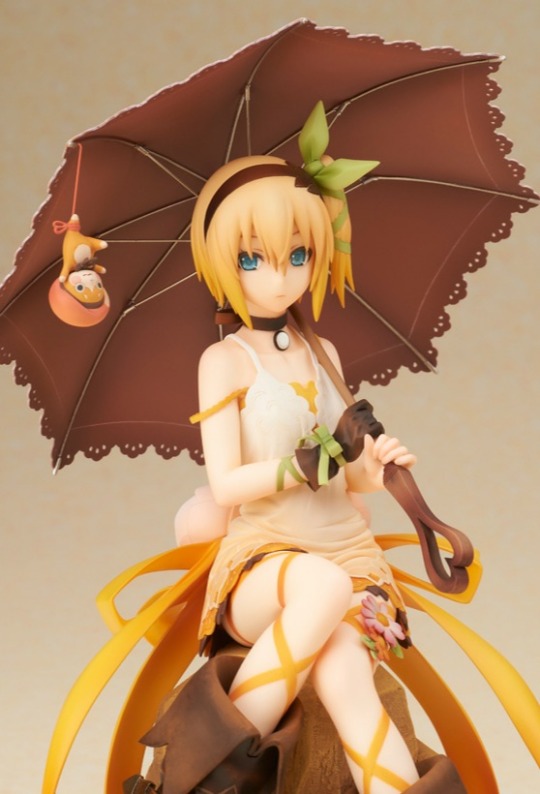
Edna ; Tales of Zestiria ☆ Alter
#edna#edna figure#tales of zestiria#tales of zesteria the x#tales of zestiria figure#tales of zestiria edna#alter#anime#anime figure#anime figurine#figure#figure collecting#figurine#scale figure#anime collecting#myfigurecollection#manga
134 notes
·
View notes
Text
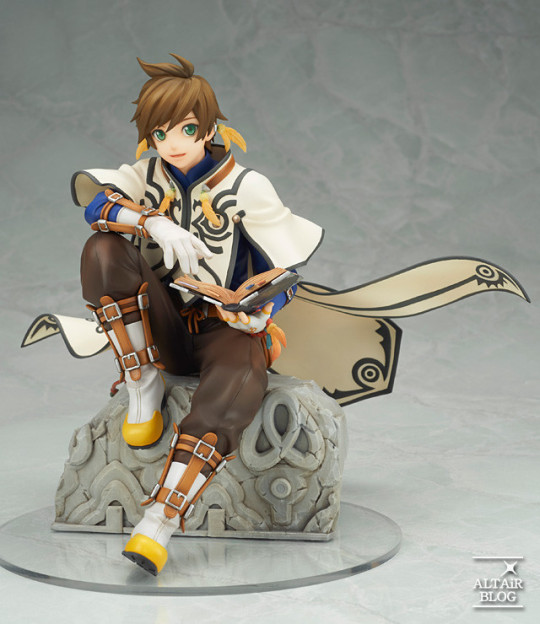

Sorey // Tales of Zestiria
ALTAiR (1/7) by Alter & Amie
#tales of zestiria#tales of zesteria the x#sorey#tales#tales series#tales of#altair#scale figure#1/7 scale#anime figure#video game#figure#alter#amie#upload
9 notes
·
View notes
Text
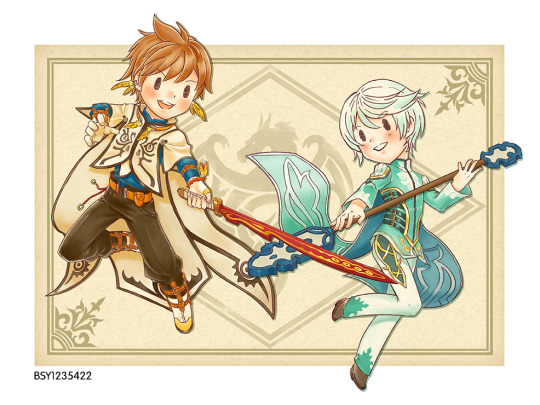
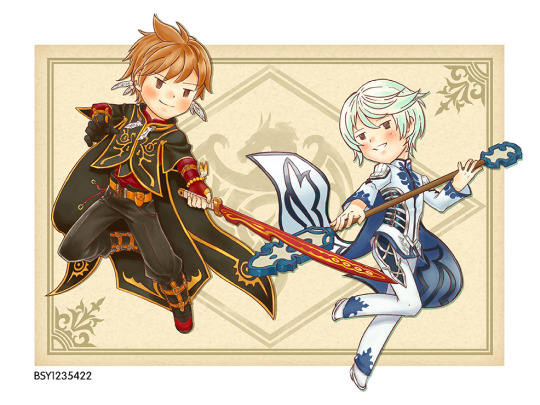
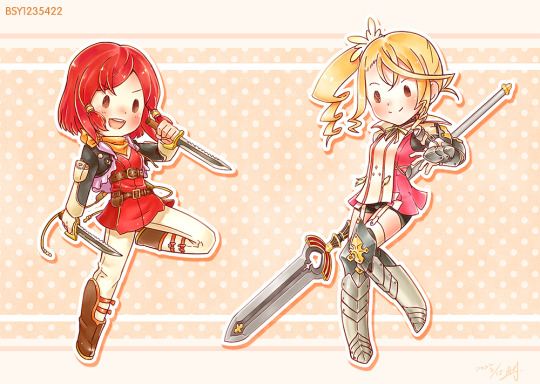
BSY is just really good at outfit details and it makes me cry
#sorey (toz)#mikleo (toz)#rose (toz)#alisha diphda#tales of zestiria#zes#v#last post unless i figure out where the artist of my loc sorey avatar went#vca
64 notes
·
View notes
Text
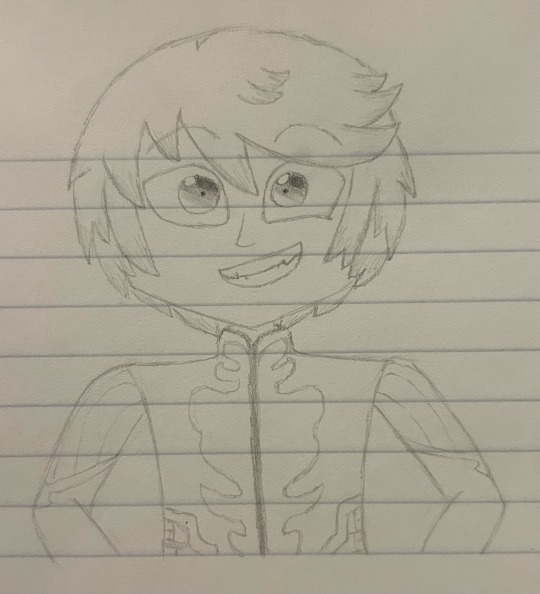

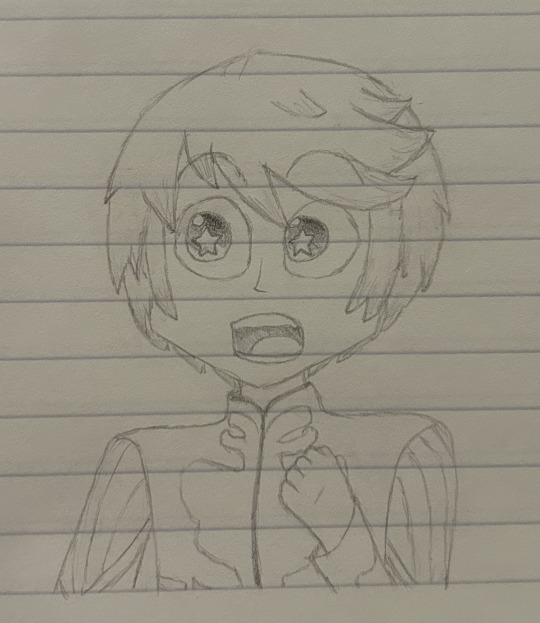
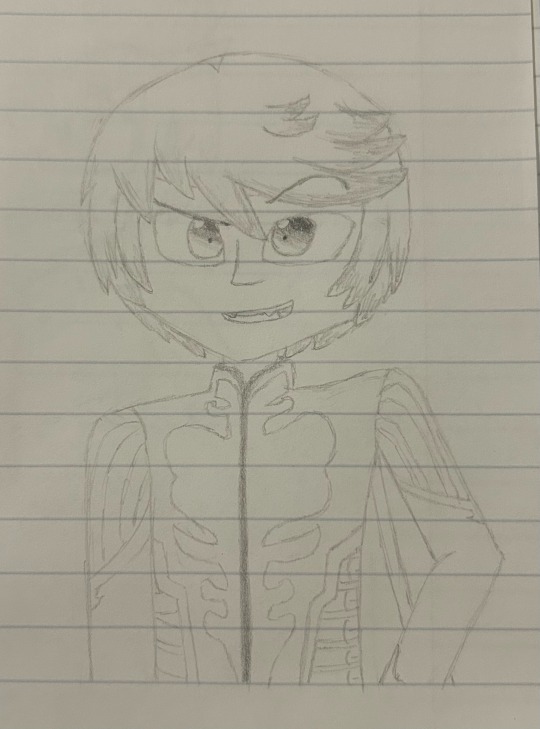

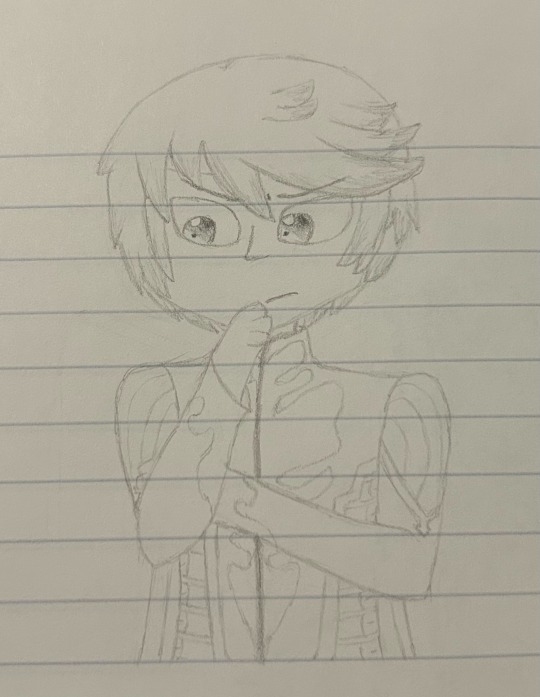

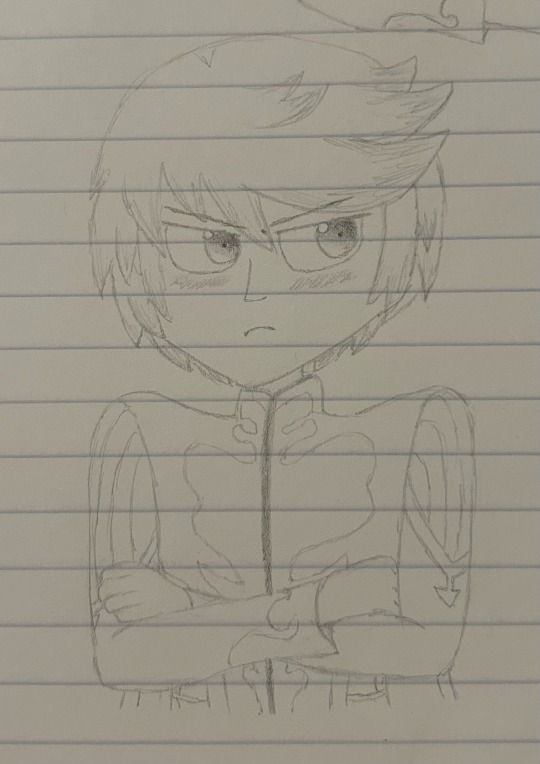
mikleo dump because i wuv him
#took a sec to really figure out how to draw him but i think i got it down now#wyvern art tag#tales of#tales of zestiria#mikleo#sketches
12 notes
·
View notes
Photo

My Tales of Zestiria collection! (Click on image for better view)
I’m pretty happy with this set up!
#tales of zestiria#tales of zestiria the x#toz merch#sormik#sormik merch#figures#anjistuff#kotobukiya#Altair#Chibi Kyun Chara figures#anji 2022 merch#official merchandise
96 notes
·
View notes
Text
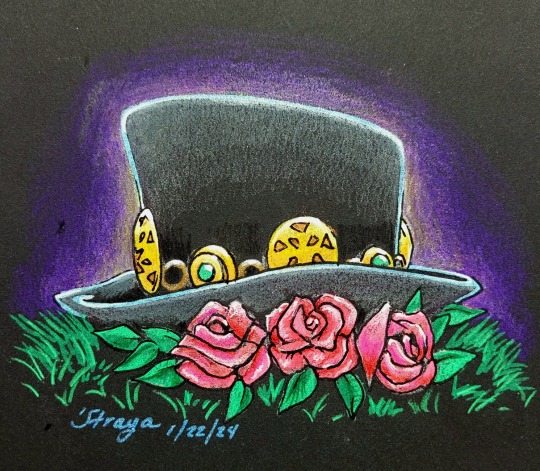
Happy 9th anniversary to Tales of Zestiria. ✨️ 💚
(A little experiment with posca markers and colored pencils on black board I forgot I started a while back and figured I'd finish for today.)
20 notes
·
View notes
Text
@stupogo replied to your post “I think the next Tales character tournament should...”:
okay but do we even have enough named parents to have a full braket? also my money is on Besli from Xillia 2 .... wow the Xillia games are just FULL of bad dads/father figures
I think we do because here is my list and I know I missed some from the games I'm not as familiar with:
Shizel (Eternia)
Kratos (Symphonia)
Anna (Symphonia)
Frank (Symphonia)
Mylene (Symphonia)
Virginia (Symphonia)
Dirk (Symphonia)
Dorr (Symphonia)
Will (Legendia)
Duke Fabre (Abyss)
Suzanne Fabre (Abyss)
King Ingobert (Abyss)
Largo (Abyss)
Oliver and Pamela Tatlin (Abyss - I don't recall if they are distinct enough in personality to warrant separate polls or if they should compete as "Anise's Parents" together)
Hermes (Vesperia)
Aston Lhant (Graces)
Derrick Mathis (Xillia)
Ellen Mathis (Xillia)
Sonia Rolando (Xillia)
Warrick Rolando (Xillia)
Jiao (Xillia - at least if his treatment of Elize is involved enough to be counted as her adoptive father after he took responsibility for her after her birth parents died)
Ludger (X2)
Victor (X2)
Bisley (X2)
Zenrus (Zestiria)
Zephry (Arise)
Wow Symphonia has a lot of parents. I only need to think of 6 more to fill a 32 character bracket and I'm sure I missed some because I haven't played every game
25 notes
·
View notes
Text
TALES OF ZESTIRIA FACTS:
tutorializes equipment fusion 600 times but does not acknowledge the fact that the random optional bosses will kill you by looking at you BUT ARE AT LEAST SOMETIMES lords of the lands so you have to fight them to restore the blessing in an area. no skits about this no throwaway lines about this. figure it out from context clues / throwing yourself at a brick wall (very strong octopus woman). or dont.
says "I guess we just have to run around looking for the Important Plot-Relevant Dungeons on our own since we dont know exactly where they are!" and then. dumps you out of the cutscene and lets you actually just do that
shows you a situation that legit sucks but not in a plot-relevant way and goes "you cant actually do anything about this!" and the characters are like "we cant actually do anything about this!" and you genuinely cannot
literally uses the term "for the win" in the skills menu
i love this fucking game.
29 notes
·
View notes
Note
Do you mind if I ask your top 10 favorite characters (can be male or female) from all of the media that you loved (can be anime/manga, books, movies or tv series)? And why do you love them? Thanks....
In no specific order. Did i take this opportunity to post pics of these characters? Yes.
Revy (Black Lagoon)

A dual wielding gunslinger from Roanapur. She is badass and deeply unhinged. A seriously traumatized woman with solid character flaws and a weirdly pseudo romantic relationship with the guy she kidnapped for a ransom and is now desperately trying to protect without realizing that she can't save his innocence, because he was never innocent and pure.
Fredrica Sawyer (Black Lagoon)

A cleaner from Roanapur, uses a chainsaw as her primary weapon, cannot talk due to a severe injury to her larynx and uses a voice synthesizer. An adorable and creepy goth girl who may or may not have in universe ties to the Texas Chainsaw massacre. Which yes, implies that black lagoon is set in the same universe as the TCM movies.
Dazai Osamu (BSD)
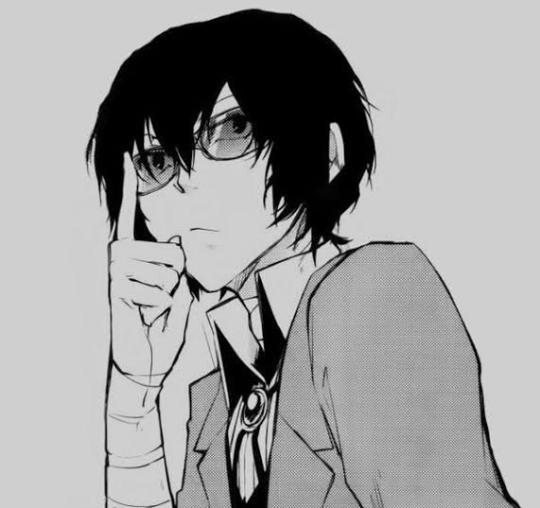
Love the depiction of depression and mental health problems with the guy. Love how he is constantly present everywhere and is seen through everyone else's perspective and yet we know so little about him. He is a dork and a brat and so annoying. He is usually aloof and distant but deep down has the capacity to be tender and kind that is only seen in the rare moments of vulnerability. But he is so hopeful and yet completely convinced he deserves nothing.
Chuuya Nakahara (BSD)
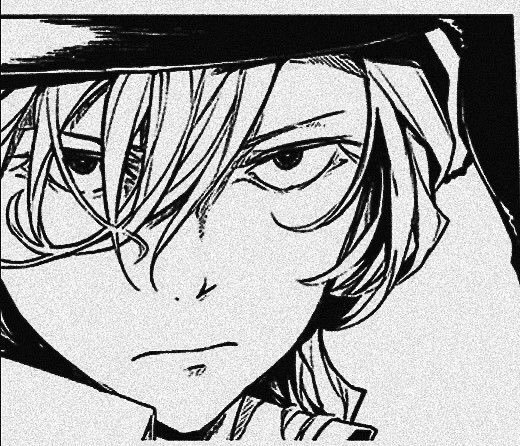
He's such a tragic character like his life is one compromise after another as he gets pushed further and further into a bad situation but he will not let that stop him from making the best out of his situation. His compassion and empathy for even those who hurt him is so powerful but his brutality and intelligence is another aspect that makes him stand out against the other characters of his kind. And then you have his incredible loyalty where he will cross all boundaries to protect those he considers his people. Gorgeous characterization honestly.
Yato (Noragami)
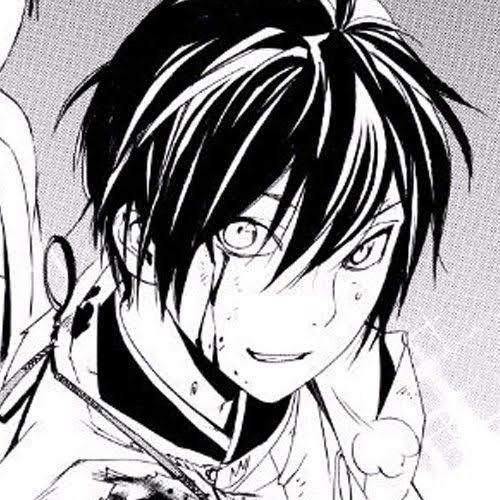
Another extremely tragic character and one who is trying so hard to change his fate despite everything. My guy does NOT catch a single break through the centuries he has been alive and he is still so hopeful. Not to mention letting Bishamon despise him for so long just to protect Kazuma, a guy he barely knew at the time. UGH. And his whole thing for Hiyori and his affection for Yukine. Kill me!
Yukine (Noragami)
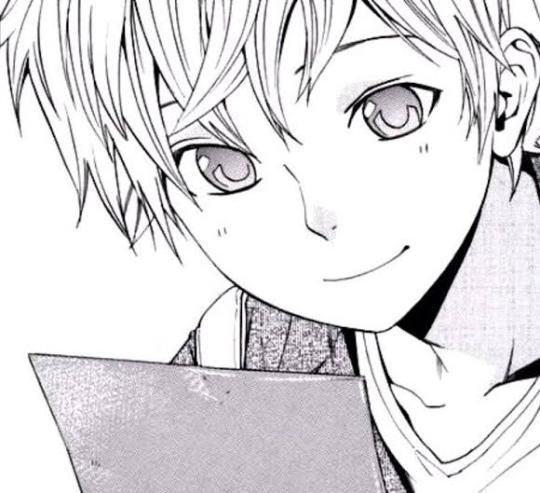
This was the first time I cried honestly. His backstory had me curled up in my bed unable to eat for an entire day. And his growth from an annoying unlikeable brat to one of the most lovable characters is crazy. Also no, I will never not cry over Yukine calling Yato 'dad'.
Jeremy Pascal (Tales from the Gas Station)
I didnt realize how much I liked him till I thought he died. In that regard I'm like Jack I guess, neither of us realised how much we cared for this adorkable himbo ex cultist. The fact that he is genuinely heartbroken that his suicide cult abandoned him and committed without him is so...oddly endearing and just the energy he adds is charming. He's also such a great friend to Jack, man better start appreciating him more.
Sorey (Tales of Zestiria)

This is my son. And my sun. He is the most precious, sweetest boy to me. Aside from being ridiculously gay about Mikleo, the guy is what you'd think is a typical hero figure in such a setting. Pure, celibate, sweet and even tempered etc. But he is snarky as hell, constantly teases others, is NOT oblivious contrary to popular opinion. He is also irritable. I also love that he is an archaeology nerd.
Irma Lair (W.I.T.C.H)
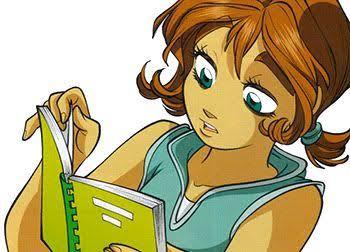
I dont remember too much about her but I always really liked her. Enough that she is still amongst my absolute favorites. It probably helps that she was made wlw in the tv series and has some shippy moments with Cornelia in particular.
Balalaika (Black lagoon)
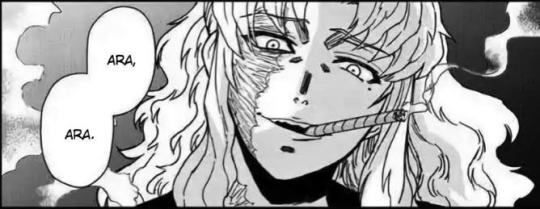
Listen, she is an ex military woman, who went MIA with her entire squad of loyal soldiers and now runs the fucking mafia in Roanapur. Woman is gorgeous and has acid burn scars all down her face and body. And she is terrifying. She will break necks with a smile and values loyalty and efficiency above all else. But she is such a deeply damaged woman who deserved better. But see, the people in Roanapur are there cause this is their last stand before they end up dead.
11 notes
·
View notes
Text
I replayed Tales of Zestiria. It took 70 hours and the post-game DLC chapter took another 6.
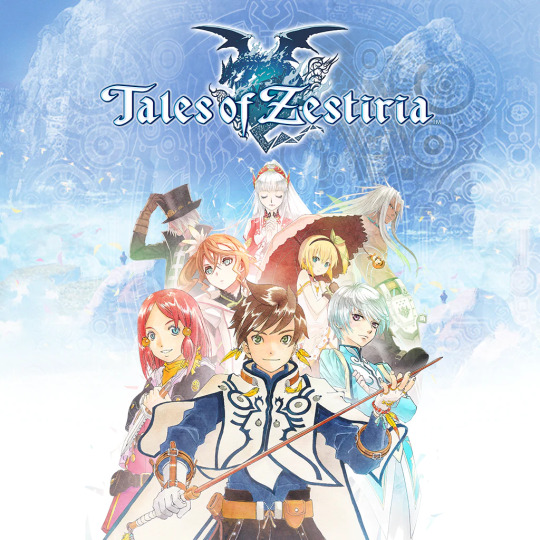
Tales of Zestiria released at a time when I was big enough into Tales that I pre-ordered Special Editions and asked Gamestop employees if I could keep promotional posters after they were done with them (I still have the posters for Graces and Xillia). This means that Zestiria, as a Tales game on the brand-new PS4 hardware, had me vibrating with excitement and set me back over a hundred dollars. To call the game a disappointment would be underselling it. I skipped meals to afford this game and then couldn't bring myself to bother opening the Blu-ray movie that was packaged in the Special Edition, or to preorder the prequel, Tales of Berseria, two years later. Zestiria was inescapably bad.
Still, I'd expected to come away from this replay a decade later with a new appreciation for the game. I'm better at analyzing art now than I was then, and even bad art can have something interesting to say, even by accident. But the further I dug into this playthrough (which cost me an extra fucking $60, by the way, because my original disc has gone missing and i guess namco cant be bothered to lower their prices on 2015 offerings), the more appalled I was at Zestiria's lack of quality assurance, cut corners, bland story, and infuriating systems. Every Tales game has its fair share of jank. With Zestiria, the publishers clearly assumed this this meant Tales fans' jank threshold is through the sky. And given its 9/10 Steam rating, maybe they guessed correctly.
The best Tales games deconstruct genre tropes by first presenting those tropes at face value, then turning them on their heads halfway in. Symphonia is probably still the clearest example of this, as its Chosen One pilgrimage is revealed to hide something much bigger and more sinister behind it, but most games in the main series do this both with their main story and with one or more party members' individual arcs. The idea behind Zestiria and its prequel Berseria was a novel take on this series staple: have Team Destiny make a game with a doggedly cliche story and have Team Symphonia follow it up with a whole-ass game that turns all those cliches on their heads. I really appreciate this initial idea, and it actually works pretty well, still; Zestiria's story and characters are noticeably more complex and interesting after you've played Berseria and gotten that context.
But. Zestiria is a worse game than Berseria, by far. Once I'd played Berseria, replaying Zestiria to catch the new context was a massive chore, with its frustrating battle system, terrible area design, worse dungeons, and bland characters. It's easy to play Phantasia after its stealth prequel, Symphonia, because Phantasia PSX is fun and polished, and the areas where it is dated don't invite immediate comparison to the same areas in Symphonia. But Zestiria is unfun and unpolished and released only two years before Berseria on the same hardware. Zestiria's status as a sequel is simultaneously the most interesting thing about it and something that makes it even more inexcusable. While I don't know anything about the development of the two games, I can't help but wonder if the existence of Berseria is part of the reason why Zestiria feels so rushed and unfinished. They couldn't release Berseria first without ruining the whole point of the games' connection, for both of them. So if one game was going to have to drop on a strict deadline it would be Zestiria, the more cliche entry that allows for Berseria to function as a deconstruction. Now, though, 6-8 years later, it just means that only one of the two games in this legitimately cool experiment is actually worth a replay.
On its own merits, Zestiria's story is just a cliche. Sorey, our protagonist, is a human raised by Seraphs, elemental spirits invisible to most people. Because Sorey can see Seraphs, he takes on the role of Shepherd, a Chosen One religious figure that historically works with Seraphs to beat back the evil Lord of Calamity every time a new one crops up. He collects a team of Seraphs along with a human whom he gifts with the ability to work with him, and together the crew "purifies" "malevolence" by fighting monsters. At the end, he purifies the Lord of Calamity, sacrificing his friends and/or himself and/or his time (it's unclear, both accidentally and deliberately) to do so, thus saving the world. There's a few more wrinkles than that, but generally it's a fairly simple story. The neatest thing about it, actually, is that Sorey's Seraph friends can turn into weapons for him when they fuse with him, which is a fun reference to Tales of Destiny, a game in which certain characters had magical talking swords that only a select few people could hear.
It gets ideologically...troubled, though, when it comes to the concept of malevolence. In the world of Zestiria, feeling negative emotions can turn living things (and somehow also some inanimate objects) into monsters called hellions that serve the Lord of Calamity, which is essentially the being with the most malevolence in the world. By fighting those monsters Sorey can usually return them to their normal selves, unless they're "too" malevolent or they like their malevolence somehow and refuse to turn back, and he's forced to kill them. Malevolence isn't necessarily generated by doing bad things, it's generated by the negative emotions themselves. Someone doing bad things who think they're doing them for the right reason won't turn. Someone doing good but resentful of the fact that there's a systemic shortcoming requiring that they fill this need will turn. This essentially cordons off a chunk of the range of human emotions as "the bad ones," thus generally denying them to all the characters we're supposed to care about.
Every time Sorey gets frustrated by an injustice or his inability to help someone as much as he'd like, he's cautioned to stop feeling that way, or he might turn and in so doing, force all of his friends to turn too. And while plenty of good people turn, they can't be reasoned with until they've been purified, and their emotions reset. They do a few interesting things with this, like when Sorey must maintain a sort of radical empathy toward the man who tortured and killed his grandfather in cold blood, while the man taunts him about having done it. But for the most part, it means that Sorey's character does not really develop throughout the game. He must stay friendly and approachable but stoic and incorruptible because the story's stakes if he falls are so high that the writers can't let that happen. The intent here is to frame hellions as one thing so that when Berseria features a protagonist who is becoming a hellion, the player's conception of the world is challenged and broadened. A more interesting story would be one in which Sorey does become a hellion and has to figure out a way to stop his friends from changing too, but that would lean too much into what Tales of Berseria does, so Sorey must stay a bastion of positive emotions for the sake of the twist, which only happened two actual real-world human years later, and not to these characters.
I think Final Fantasy XIV: Endwalker is a useful comparison, here. In that game, feeling despair about the impending end of the world turns people into monsters, killing them instantly. It's a metaphor for the way inaction from the feeling of helplessness at the mind-boggling scale of the problem of global climate change keeps us from trying to do anything to fix the problem; the problem of "don't despair at the end of all things or you'll end sooner" is, purposely, a paradox because our current call to action is also a paradox. The problem's too big for any one of us but we can't let ourselves think that way or it'll only get worse. But the negative emotions in Zestiria aren't also unconstructive emotions. The central theme of Berseria is that angry people get shit done, which is demonstrably true in our world too! So it feels insincere when Zestiria frames anger as a problem that must be solved before any larger problems can be handled. Especially when one character, Rose, is an assassin whose mission is to kill people who use their power to ruin the world. She doesn't become a hellion because she doesn't kill out of anger, but the question then hangs over the entire game: why does that matter? If the evil Cardinal Forton was stabbed by someone who was mad at her, she wouldn't be any less stabbed. You can easily find lots of old forum posts from back when the game released of people trying to piece together why character A was a hellion but character B never changed, and in the end, the answer is it's arbitrary. The writers decided A was too angry or sad or something and that B hadn't reached that level.
It doesn't help that the translation is pretty shoddy in places. This was an issue with localizations of Japanese games at the time. I remember the discourse around the localization of Persona 5, a good game I like a lot with powerful themes and messages about real-world issues. The localization didn't really give its characters distinctive voices and had many sentences that were nonsensical or poorly structured, to the point that the localization of Persona 5 Royal had to go through with a scapel and rewrite a number of lines for clarity and voice. Zestiria has this problem but much worse. At the end of Persona 5, I knew what the characters were fighting against and why. The cutscene before the final boss of Tales of Zestiria is so hard to parse that I found myself questioning things I'd thought I knew about the basic parameters of the story and characters. This really does a disservice to the voice actors, who work valiantly to make their characters sound distinctive and individualized through a sludge of boring words. It's especially frustrating because for the first (and I believe only) time, they got some voice actors known for their internet presence for the game, and those guys had to work twice as hard to make their roles in a seminal JRPG series memorable.
I've written this much and barely touched on the gameplay yet. One of the most frustrating things about Tales of Zestiria is that its battle system is designed after the one in Tales of Graces, the game with my favorite battle system in the series, but it's tweaked in ways that make it borderline unplayable. In Graces, regular attacks that used the attack stat were called "A Artes" while special attacks that used the magic attack stat were called "B Artes." This game keeps that differentiation, calling them instead "martial artes" and "arcane artes" and adds a third category for spells, or "seraphic artes". The game attempts a rock-paper-scissors style tier system in which martial beats seraphic, seraphic beats arcane, and arcane beats martial. In practice, this means that each type of attack can't interrupt the attack type it's weak to. And then, instead of hitting them out of casting, arcane artes speed up the cast bar of any spell users they hit. This makes arcane artes (i.e., the cool moves you use in every Tales game because they're cool) a dangerous proposition because at any time their target might start casting and get off a powerful spell instantly as a result. It also makes the bad AI of CPU characters way more dangerous, as even if you know how to stop an enemy from casting, often your partner will run over to another and help it cast faster instead.
Also, no character type has access to all three types of artes. Humans can use martial and arcane, Seraphs can use martial and seraphic, and the powerful human-seraph fused forms can use arcane and seraphic. The fusing system means that there can only be as many Seraph characters on the field as Human, so a battle party is either two characters (Sorey and one Seraph) or four (Sorey, a partner, and two Seraphs). In the many parts of the story where Sorey is traveling only with his four Seraph friends, you're stuck with a battle party of two. If a Seraph dies in battle, they can be switched out on the fly and recover over about a minute while benched. If a human dies, they can revive by fusing with their partner Seraph. Fusing is the only way to revive human characters without items, and the only way human characters can get access to healing spells, which are used by spending gauge that's built up by comboing.
This means that players are disincentivized from playing as Seraphs, as if the Seraph dies, they'll have to switch to another character they're less familiar with until their character has been benched long enough to return. It also means that human characters at their weakest right after getting revived are in a dangerous position, as fused characters can only use arcane artes, which can make enemy spells cast faster, but they have to build gauge by hitting enemies in order to get enough to spend on a heal. The system is both overly complicated and makes it difficult to claw back out if things go south. It's the result of a lot of pretty good ideas stacked together until they're getting in each others' ways.
Another collection of pretty good ideas that get in each others' ways that is then stacked on top of all the rest is the equipment and skills system. Sort of like in Tales of Vesperia, equipment can have skills attached to them. Unlike in Vesperia, however, there's no way to permanently learn the skills attached to your equipment. Once you switch to a stronger weapon or armor piece, your character loses the skills attached to their previous gear. On top of this, each skill is placed on a 5x13 (I don't remember the exact proportions) tic-tac-toe style board. If you manage to place columns, rows, or stacks of skills on this board, you get better skills. But, again, those are wiped away if you replace your gear. If you find a sword with 60 more attack but it breaks the column that raises all your stats by 20, then all your other stats suffer if you equip it. If that same sword breaks the row that improves the character's attack growth rate for level-ups, then in twenty levels your character might have worse base attack than they would have if you'd kept the crappy sword that let you hold onto that growth rate. But then, on top of that, all characters' growth rates are decided by the stats of the equipment they're wearing when they leveled up. So maybe it's a better option to just wear the strongest gear and let that improve your growth rates that way? There's no way of knowing which one helps you more. And in the short-term, you're going to have a difficult time in battle if you're using weak equipment, even if it lights up your tic-tac-toe board like a christmas tree. Then, there's also an item fusing system where you can chunk items of the same type together to combine their equipped skills. But every time you fuse two of the same item with different skills in the same slot, the resulting skill is unavailable until you fight with that item equipped for a certain number of battles. If you fuse a piece of gear with a locked skill slot, that slot disappears, making the resulting piece of gear worse, rather than better. So to actually get good enough gear options, you have to fight wearing items you fused regardless of their stats or how they fit on your tic-tac-toe board (you can't even see where a locked skill will go on the board until you've unlocked it).
So you have to wear bad gear sometimes and some of that bad gear is going to affect your stat growths during levels, and suddenly this is three different decent ideas combined into a terrible chimera of a gear system. This makes equipment management for the six (sometimes seven) party members an agonizing process that often easily takes twenty minutes to slog through every time you get a new piece of equipment or visit a shop. There's even more complexity to this gear system than I've brought up here, but I'm exhausted just talking about it, so let's move on.
So we've got an equipment system that's overly complex and often contradictory in its modes of engagement, grafted onto a battle system that's engaging and occasionally interesting but unintentionally punishing and limiting. And all this is presented through the jankiest engine and worst art direction in the series. Zestiria is graphically ugly and runs like a nightmare, with a stuttering frame rate, a tiny draw distance, and bland, same-y environments. The developers had the idea of having battles take place on the main map, rather than placing them in separate flat arenas like in other Tales games, and while this makes sense in theory, in practice it means that the camera is actually hellish, often getting stuck on setpieces or other characters, or just...the idea of a slope. Dungeons are designed with this in mind, as nearly all of them are made up of thin corridors between large rooms where the enemies are placed, but enemies will follow the player character without ever giving up or tiring, often at a slightly faster pace than the player character. Enemies grouped together result in longer and more difficult encounters, where more enemies keep entering to replace the ones you dispatch.
If, for example, you're 50 hours into a game and trying to get to the next room of a dungeon without a fight, but all three enemies in a room catch up to you in a narrow hallway, then you're stuck fighting twenty enemies in groups of five at a time while the camera resolutely stares directly at the wall behind your character and at any time one or five of them might start casting a spell, which the partner character might speed up with an arcane art, and then the party's dead and you lost all the gameplay that got you to that point. While this is a worst case scenario that only happened to me a handful of times this playthrough, any combination of these issues plague nearly every enemy encounter in the game.
The six-hour DLC, which is really just a single 11-floor dungeon with fusing (and therefore player one's healing and reviving capabilities) removed, which provides no new story information, makes these issues even more apparent, and frustrating. A pathway up to the eighth floor is locked behind a hidden door on a wall on the sixth floor with three purple dots on it. The whole dungeon is tinged with a purple haze, so these dots are hard to make out, and it's made harder by the constant stream of enemies chasing you through the dungeon without stopping. In most of the game, if you fight an enemy, then all nearby enemies disappear when you finish the fight. In the DLC, though, they show right back up while you're recovering and keep chasing you, meaning you can get five to six encounters in a row with no chance to get your bearings, all while hunting for three small purple dots on a wall somewhere in a purple dungeon. It was clearly purposely designed this way to try to wring more time out of a miniscule DLC, and it worked, as I spent at least two of my six hours with that DLC just scouring the same three floors for that hidden door. That DLC was on release - and still is - ten whole dollars.
It's impossible not to have to grapple with the realization that Bandai-Namco forced this game to be bad. The game needed more development time that it did not get. The game needed more QA testing or, more likely, to actually respond to feedback received from testers. The game needed better localizers or, more likely, localizers with enough time to put the script through a few drafts before finalizing it. The game didn't need DLC, the DLC it got didn't need to be six hours long, and it definitely should never have been $10. The game itself should not be $60 now in the year of our lord 2023. And none of this is because Team Destiny said "let's make the game bad and expensive and frustrating." It's because someone higher up in the decision-making process said "I don't give a shit if the game is bad and expensive and frustrating." Tales of Xillia feels like it was made to be a benchmark of quality for the series. Tales of Zestiria proves that the developers were not being given the time or resources necessary to meet that benchmark. We'll see if we get another utter failure like Zestiria after Arise, or if they manage to maintain the new benchmark Arise has set. But knowing Bandai, I'm nervous about which way that's likely to fall.
Oh, the music's pretty good, though. Like six tracks in the game are really good and the rest is bad to fine, which is better than the vast majority of the series. Get Go Shiina to compose for more Tales games, please.
10 notes
·
View notes
Text


Sorey & Mikleo ; Tales of Zestiria ☆ Alter
#happy pride month everyone!!!!!! <3#request tag#tales of zestiria figure#tales of zestiria#tales of zesteria the x#tales of zestiria the x#sorey#sorey figure#tales of zestiria sorey#mikleo#mikleo figure#tales of zestiria mikleo#alter#anime#anime figure#anime figurine#figure#figure collecting#figurine#scale figure#anime collecting#myfigurecollection#manga
142 notes
·
View notes
Note
How do you make your magic system more unique besides pulling from various myths and folktales ? I used to sort of Frankenstein magic systems together based on what would work for the characters but over time that went from being extremely useful to very repetitive. All my magic systems felt like carbon copies of each other after a while
Oooo well firstly hi! The Vagus art still lives rent free in my head lmfao
Anyhow, it really depends on what you need from your story. The use of "Frankenstein" makes me think maybe your lens is a bit too focused on individual characters. That's not a bad thing inherently, especially for magical realism or a soft magic system. But generally, you also need to keep in mind the way your magic system interacts with the story itself and the world at large, as well as what magic can mean thematically. It's a process of making it feel cohesive as a whole so everything feels purposeful.
When I was making the magic system for De Cineribus, I decided to keep it relatively basic since it was my first attempt at a novel. And at the end, I was also really obsessed with Tales of Zestiria and Berseria, both of which use the same elemental system for their world.
And so fire, water, earth, and air it was. But a lot of the extra details I came up with wound up inadvertently creating themes I hadn't really anticipated. The eye color system, for example, which determines the number of elements you can learn and how much raw power you have access to. It provided a roadblock for Felix learning magic that made his story more engaging, while also creating this sort of magical class structure in the Medeian Empire.
I do wish I did more with the light and dark alignments in the first book, aside from the detail of how it changes the way your element is expressed (i.e. blue flames or red, water or ice, etc.). But I do have some ideas of where it can lead in future books, namely in the emotions and values the different alignments draw their powers from. Sorta like the differing philosophies of the elements in ATLA.
Now admittedly, I don't recall whether I knew Felix would have blue flames at the very beginning (like, back when I made him before deciding this animated slice of life would be a novel series), or if I figured that out after I'd ironed out the larger magic system. But a lot of this was learning to listen to what my gut was telling me on what worked for the story versus what didn't. So you can absolutely start with your characters' individual magic, then iron it out from there. But in your case I think trying it from the opposite approach might help.
My suggestion is start with the foundation of your magic system as a whole, and then over time, narrow in on your characters and where they fit into the larger picture. Reverse engineering (starting with individual characters) can work, but that seems to be where your carbon-copy problem might be originating from. It results in a messier broader picture that leaves it feeling unfocused and not cohesive. Same goes for pulling from myths and folklore. That's fine, but always be sure it's in service to your grander purpose, not just your characters.
Hope this helps! (also hope you enjoy the rest of the story - lowkey I have big plans for the De Cineribus series)
#writing advice#writerblr#writing is hard#writers problems#writers of tumblr#writing problems#magic system
11 notes
·
View notes
Text
[Translation] The Essence of Zestiria - Kami and Seraphim
From the 20th Anniversary Taizen book.
Higher spiritual beings that help humans have played a significant role in the “Tales of” series. They are the “spirits,” or in some cases, words such as “Craymel” or “Sacred Beasts” are also used in place of it, who are involved in the formation of the world and control the underlying principles and basic structure of the world. In fact, these concepts found in medieval alchemy are said to have originated in the myriad gods of the ancient polytheistic world.
In Tales of Zestiria (TOZ), seraphim appear as the spirits. Although they are not so different from humans in stature, their history is much older, and they possess high wisdom and supernatural powers. Not counting transformations by malevolence or other special means, they remain immortal and are truly gods, and in fact, they are the object of faith in this work. However, what distinguishes seraphim from the spirits in other works in the series is that the concept of seraphim is rooted in animism, as opposed to the aforementioned medieval four-elemental spirit principle. Animism, which holds that all creatures and materials in nature are inhabited by spirits, has been a worldwide practice since the ancient times, and in Japan, they are portrayed as Yaoyorozu no Kami, and that these deities can be both good and evil and have a wide range of personality and ideals. The depiction of the sublimation of these figures into the form of the seraphim can be found in the structure of Divine Artifacts and festivals, malevolence and purification, and the attempt to override a politically motivated belief over a primitive religious belief to become the state religion; all as projections onto actual practices.
The interpretation of seraphim as kami or spirits has been mentioned, but just as Maotelus (Maoterasu in Japanese) is reminiscent of “Amaterasu,” all of the Five Lords are modeled after the Kojiki and Nihon Shoki deities in rhyme. The following is just an example, but we may infer that Musiphe (Musuhi in Japanese) is based on Takamimusuhi, Amenoch (Amenochi in Japanese) is Amenotokotachi, Hyanoa (Hayahino) is Hayaakitsuhiko, Eumacia (Umashia in Japanese) is Umashiashikabihikodi, and Maotelus’ predecessor, Innominat (Kanonushi in Japanese) is Amenominakanushi.
The positioning of seraphim as not limited to mere guardian deities but also includes elements of Japanese mythology and projects a likeness to kami, explains how blessings are given to humans or a human’s exercise of spiritual powers. The best example of this is an innovative system called “Armatus,” in which a human being, such as a Shepherd or a Squire, is transformed by fusing with seraphim. Armatus clearly implies “divine might” (T/N: “神威” can also be read as “kamui” like “神依” or “Armatus”) i.e., the Shepherd gaining divine powers and becoming a spiritual being transcending beyond human beings. The fusion with seraphim is “kamioroshi” to unite with kami and incorporate the feeling of the awe of the mythical age that lies within us all. Rather than being born out of phenomena, like “spirits” and their ilk, “seraphim” are beings that have been there already when humans came to perceive and become aware of the world, and their existence is synonymous with the world itself.
19 notes
·
View notes
Text
why are my two biggest hyperfixations both anime games with absurdly complex character designs why did i do this to myself
#ys 2 more like ys 2-many-layers#tales of zestiria more like tales of complicated outfit symbols#i try to simplify where i can but you can't simplify too much or you'll lose the integrity of the design#funny thing is i actually kind of like drawing fine details on outfits but when there's too much of it it gets annoying fast#before i can even think about drawing them doing stuff and interacting i gotta try and figure out how im gonna synthesize their outfits with#my style. which is a lot easier said than done#it's. definitely gonna take some practice#wyvern rambles
0 notes
Text

❖ Call me Syn, Syna, or Raina, or whatever comes to mind when you think of me~ ( be nice, there ain't none of that negativity here ! ) I'll also respond to Smut Santa / Saint Dickolaus! 😉
❖ I'm 29, about to be 30. I'm afab and use female pronouns. Happy mama of 2 beautiful babes~ They come first before anything else, so if I don't get back to you in a timely manner or like... at all... that's why. Or maybe I just don't like you. ( nahhh that's not it ... ? )
❖ Previously went by Taqsyq, but after YEARS of being out of the writing game and just off of tumblr in general, I've decided to start over fresh. I started Taqsyq when I was like sixteen or seventeen, still in my nerdy emo girl phase fuck I still am, and there is a shit ton of things that I just wanna run away from when it comes to that blog/username, including some very bad memories that I'm not going to discuss publicly. Plus, again: seventeen, nerdy emo girl phase. Everything I wrote on that blog was the highest form of OOC cringe like you just saw a stripper accidentally slam her hoo-ha on a pole bullshit for me. The only reason I'm not deleting it is because I'm a memory hoarder and despite all the bad, I want to keep it for all the good that happened there as well. Besides, it's the account that I ran imagine-reborn (an imagines blog for Katekyo Hitman Reborn) under and I figured, if nothing else, I could get a few laughs and maybe even learn a thing or two from how god-awful teenage me was at writing.
❖ My rules are simple. Be kind to all: this is a safe zone for EVERYONE. I would like to keep it that way. I don't have a list for what I will and will not write (yet), so all I can tell you is: ask. My inbox is always open. If I don't feel comfortable writing something, I'll let you know!
❖ Minors: as of right now, I don't think I'll be posting anything that is safe for your consumption, so I would very much appreciate it if you did not interact. If you are not a minor and do not have an age indicator, this rule applies to you as well. I check my follower list daily and I WILL block anyone that does not adhere to this rule.
❖ Requests: Closed ( not for long. I promise ;D )
❖ Currently, I only write for Hazbin Hotel. But I'm open for discussion on anything else on my list down below! I'm always looking for something new to watch/read, so if you have any recommendations, fire away!
❖ Series ; Current Hyperfixation: Hazbin Hotel
Anime : Naruto ; InuYasha ; Death Note ; Bleach ; Hellsing ; Soul Eater ; Fruits Basket ; D.Gray-Man [ Original / Hallow ] ; Kuroshitsuji ; Katekyo Hitman Reborn ; Ao No Exorcist ; Yu Yu Hakusho ; Full Metal Alchemist ; One Piece* ; Shingeki No Kyojin ; Kimetsu No Yaiba ; Jujutsu Kaisen**
* Still trying to catch up. This is a massive anime, and I've spent the better half of this past year trying to watch it all. I've made it to the Raid on Onigashima, the part where Yamato got his bracelets removed. Love him, by the way! <3
** Nanaminnnn~! I am not okay about anything with this man. <3
Manga / Manhwa : Everything mentioned above ; Noblesse ; Bloody Cross ; Area D
TV : Hazbin Hotel ; Game Of Thrones ; Vikings ; Avatar: The Last Airbender ; The Legend Of Korra ; Supernatural
Books : A Song Of Ice & Fire ; Twilight Saga why did teenage me think it was the greatest series ever shoot me now fucking christ
Video Games : Final Fantasy Series + Individual Prequels, Sequels, Movies, Remakes* [ 7 / 9 / 10 / 13 / 15** ] ; Tales Of Series [ Legendia / Zestiria / Berseria / Arise ] ; Devil May Cry Series ; Kingdom Hearts Series*** ; Star Ocean Series [ Till The End Of Time / The Divine Force ] ; The Legend Of Zelda [ A Link To The Past ] ; Sonic Series ; Spyro Series ; Shining Force Series [ 1 / 2 ] ; Lufia Series [ Fortress Of Doom / Rise Of The Sinistrals ] ; Diablo 3 ; Lunar [ Silver Star Story Complete ] ; Infinite Undiscovery ; to be updated as I remember / play.
* So far, I've only played the first installment of Final Fantasy 7 Remake because I currently do not own a PS5, but I'm working on it. The Compilation of Final Fantasy 7 is my absolute favorite series of all time. I could watch Advent Children ( original and complete ) on repeat, and I've played the original release so many times that I don't even need a guide to get a 100% on a brand new save ( Obsessed much? Yup ). I'm a completionist at heart, and this game is amazing and it provides a massive sense of nostalgia for me.
** SLIGHT SPOILER (maybe? You've been warned) Another amazing installment in the Final Fantasy series, this game is so well written in my opinion. It stays away from the bigger cliches you see in most RPGs ( eg : the guy gets the girl, friendship is the key to saving the world, etc. ), the characters are so individually complex, the villain technically wins and reminds you how easy it would be for you to become the same type of monster. Plus badass women that fix your car, lights up entire cities, wakes up the fucking Gods to fight on your side, takes the entire mercenary army they led and defects to your side? IN HEELS? YES PLEASE. It has one of the best enemy turned ally characters in the FF series; I'm just disappointed we didn't get to see much of Aranea after everything in Tenebrae. Also Ardyn has some serious daddy vibes, and I would literally give my left tit just to lick Aranea's boot ( oh, the things I would do to these two, phew~ ).
*** Let's be real here. The Kingdom Hearts Series makes zero sense if you didn't play all of them and you didn't pay attention to each and every detail, and I did neither. I played 2 and 3 when they originally came out, but in my defense: it doesn't look like a series that follows a singular story, something that I did not know at the time, and usually the series I play have an entirely different story per installment ( eg : Final Fantasy and Tales Of ). I tried to piece together the story from online synopses and second hand game play ( I watched someone else play ), and it just didn't work out. So, suffice to say, my knowledge of Kingdom Hearts goes about as far as basic facts regarding Organization XIII because they were my whole reason for trying the games in the first place. I'm still open to discussion about it, though! Just keep in mind my side will be very limited. Sorry!
To Be Read / Watched / Played : Helluva Boss ; Phantasy Star Series ; Final Fantasy Series [ 1-6 / 8 / 11-12 / 14 / 16 ] ; Diablo 4 ; Black Clover ; Hell's Paradise ; Fairy Tale ; The Seven Deadly Sins ; My Hero Academia
❖ Look out below for a face reveal!
Dividers used © anitalenia



5 notes
·
View notes
Text
I emerge from the Berseria mines covered in blood 96 hours later. What an ending, huh? In the most “Tales of Berseria” move ever, all of the party members’ sendoffs are fantastic except for Velvet’s, which not only fails to stick the landing, but falls down the stairs and tumbles into a clown pie.
Laphicet: I mean yeah, even outside of the prequel connection, the game was building up to him becoming an Empyrean the whole way through. He starts as a character who does exactly as he’s told with no sense of self; his evil friends teach him how to be selfish and thus how to be a person, and he flips this lesson on its head by choosing to stubbornly, “selfishly” give everyone on earth a second chance. A little sad, but fitting.
Rokurou: All the demons on earth are cured, but he chooses not to be? Love that for him. Speaks to both an acceptance of his nature and something like penance for Shigure. And I really like how he’s… almost a folk hero in the epilogue, except you know he’s doing it because he loves murder (and wants Eleanor to train hard enough to strike him down lol).
Eleanor: Eleanor is the Artorius to Laphicet’s Innominat, so it only makes sense that they would end up as an Empyrean and a pseudo-Shepherd. Except crucially, she’s not an actual Shepherd, she’s acting as Eleanor, a person who helps people. She’s grown and moved past the need for an authority figure to tell her right from wrong.
Eizen: His personal plot is quite melancholy and overshadowed by his looming eventual death, but a nice wrap-up nonetheless.
Eizen first went out to sea to be alone from everyone; Aifread changed that, but then he disappeared. But by the end, he’s forged true connections with the party, the crew, and other Malakhim like Zaveid and Edna. While he circles around to his original circumstances as the ghost haunting the ship, we know he’s not really “alone”, simply through his changed attitude. The crew can’t see him, but he doesn’t feel separate from them, instead serving as a weird sort of guardian angel.
Magilou: Okay real talk, the one part of Zestiria that made me genuinely emotional was Magilou’s grave. This is a character who was so severely abused that she completely emotionally disengaged. Her catchphrase was “I don’t care.” In the epilogue, she’s back to being one of the few humans who can see spirits, she’s still a wisecracking, wandering sleazebag, but she’s not fortune-telling—she’s writing. You cannot write if you don’t care about anything (I say from experience lol). And now, because Velvet sacrificed herself to save the world, she cares about the entire world and everyone in it, enough to chronicle all the mundane details of their lives. A+, tearing up, no critiques.
And then… Velvet. Geez.
Look, Tales of the Abyss is one of my favourite games. I fully think it’s possible to pull off an ending where the self-destructive protagonist comes to realize they do want to live, after all, just in time to die tragically. But this was not it. I think my extreme dislike of her ending comes down to three factors:
I do not like Laphicet Crowe. Forget the themes for a second—I could buy Velvet, as a character, choosing the “selfish” option at the end, and essentially choosing to go to hell with her brother, mirroring what Celica did for her… if I cared about him at all. But I don’t. They never sold me on Laphi C. being a good kid; he comes off as a surly little misogynist. Velvet can try to find the part of Innominat that’s still her brother if she wants, but I am not convinced.
Okay now stop forgetting the themes. It spits in the face of her character arc. Remember Eizen’s speech about how you don’t have to be biologically related to someone to be family? Remember good-Laphicet’s whole takedown speech about how Velvet doesn’t belong to Innominat? Remember how like three minutes earlier, the comb symbolizing the Crowe siblings’ relationship shattered? It’s over! Laphi C. is dead! She’s not beholden to shit!
Consolation prize heaven sucks. Again, if this was a different game, I might (might) accept the idea of these characters being in hell but getting to live on in a dream world bittersweet. But in this game, idyllic dream worlds are explicitly a form of psychological torture that, again, Velvet specifically had to overcome as part of her character arc. That’s just plain bitter. ):
Oh also it’s just shot in a really creepy way. Come on. That’s creepy. Why did they do that.
It really feels like (and this would be in line with how the games were developed) they had this ending in mind before they came up with the middle of the game, or anything else.
In conclusion, the only ending I acknowledge is this:
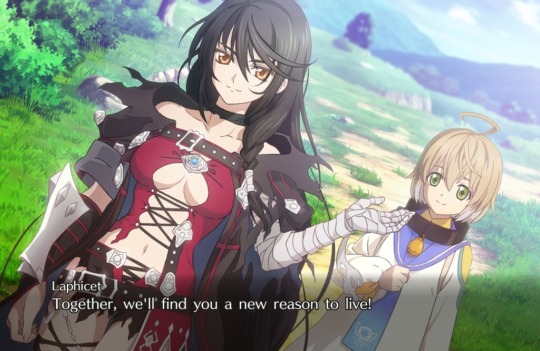
4 notes
·
View notes